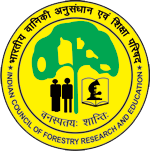In the face of escalating forest fires and their far-reaching environmental and societal impacts, the concept of Community-Based Forest Fire Management (CBFFM) has emerged as a promising approach to fire prevention, detection, and suppression. CBFFM empowers local communities to take ownership of forest fire management, leveraging their deep understanding of the local environment, traditional knowledge, and vested interest in protecting their livelihoods and homes.
The Essence of CBFFM
CBFFM is a collaborative approach that recognizes the critical role of local communities in forest fire management. It emphasizes building capacity and fostering partnerships between communities, government agencies, non-governmental organizations (NGOs), and other stakeholders. This inclusive approach ensures that fire management strategies align with local needs and priorities, leading to more effective and sustainable outcomes.
Key Principles of CBFFM
- Community Empowerment: CBFFM places decision-making authority in the hands of local communities, enabling them to determine appropriate fire management practices and allocate resources effectively.
- Traditional Knowledge Integration: CBFFM values and incorporates traditional knowledge and practices that have been passed down through generations, providing valuable insights into fire ecology and management.
- Capacity Building: CBFFM focuses on enhancing the skills and knowledge of community members through training programs, workshops, and mentorship opportunities, empowering them to actively participate in fire management activities.
- Stakeholder Collaboration: CBFFM promotes collaboration and knowledge sharing among various stakeholders, including government agencies, NGOs, and the scientific community, to foster a comprehensive approach to fire management.
- Sustainable Livelihoods: CBFFM recognizes the interconnectedness of forest fire management and local livelihoods. By incorporating sustainable livelihood strategies, it aims to reduce the reliance on fire as a land management tool and promote alternative income-generating opportunities.
Benefits of CBFFM
- Improved Fire Prevention: CBFFM's emphasis on community engagement and education enhances fire prevention efforts, leading to a reduction in human-caused forest fires.
- Enhanced Fire Detection: Local communities' familiarity with the landscape and their active surveillance contribute to early fire detection, allowing for timely suppression efforts.
- Effective Fire Suppression: CBFFM's integration of local knowledge and traditional practices with modern fire suppression techniques leads to more effective and sustainable fire control.
- Empowered Communities: CBFFM empowers communities to take ownership of their forest resources, fostering a sense of stewardship and responsibility for fire management.
- Reduced Fire Damage: By addressing the root causes of forest fires and promoting sustainable practices, CBFFM contributes to a significant reduction in fire damage and its associated costs.



